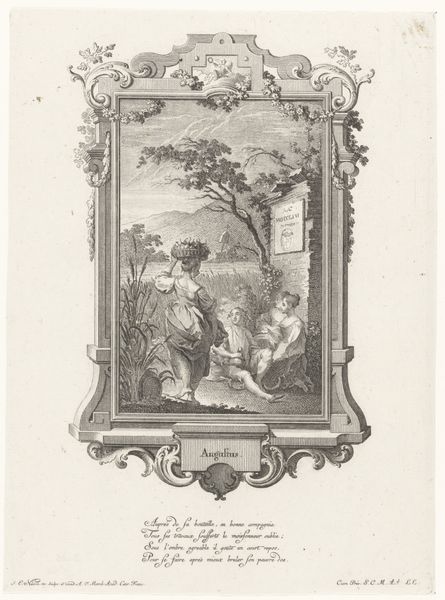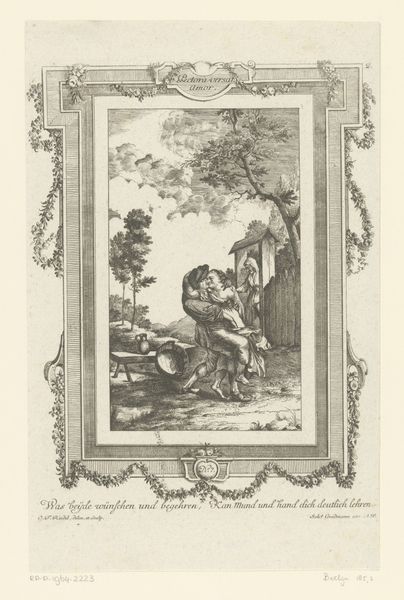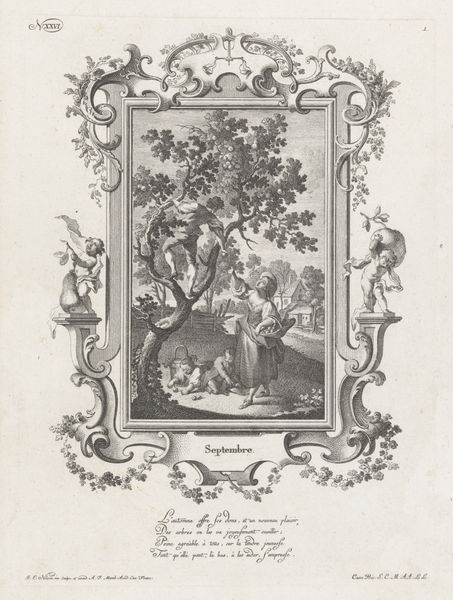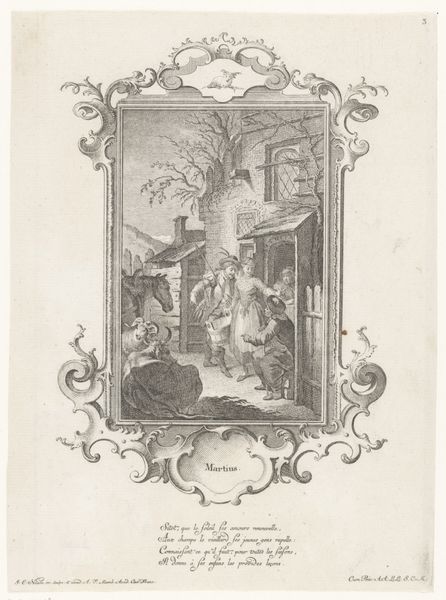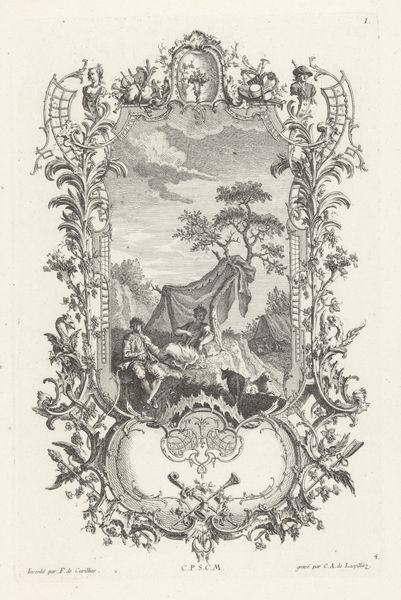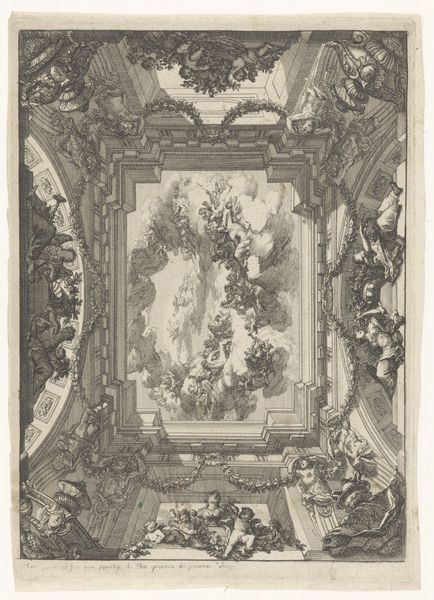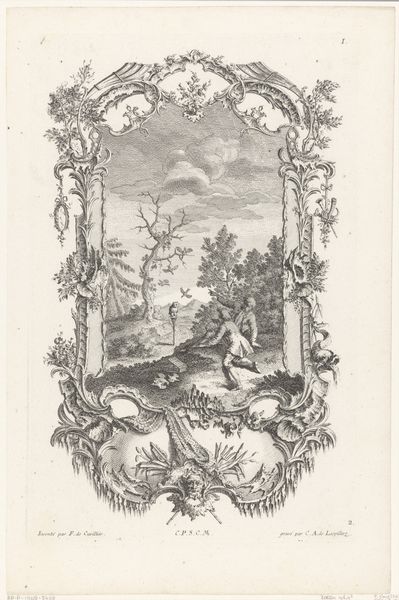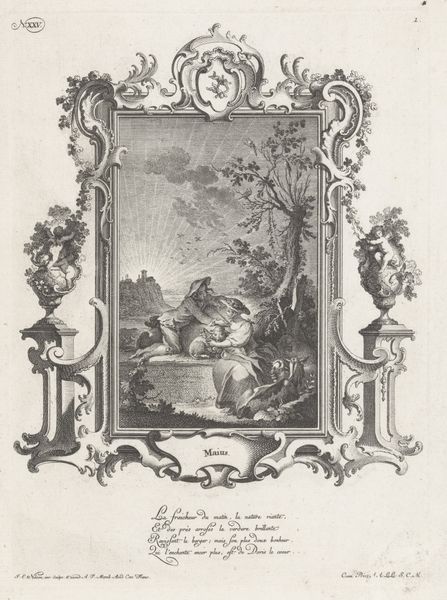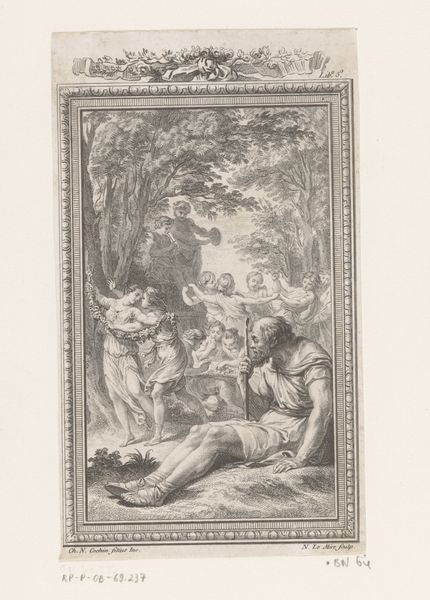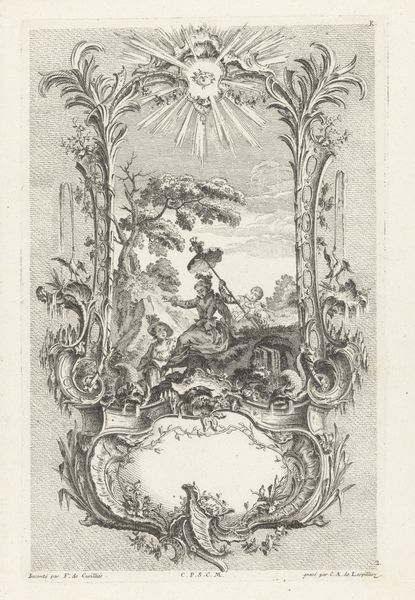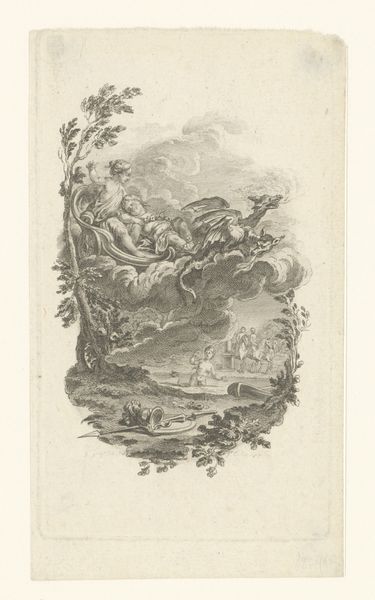
Dimensions: height 264 mm, width 194 mm
Copyright: Rijks Museum: Open Domain
Curator: Welcome. Here we have "Juli," an engraving by Johann Esaias Nilson from 1766. Editor: It strikes me as a study in leisure, but there's a strange tension, almost melancholy, hinted at in the averted gazes and slumped posture of the figure on the left. Curator: Absolutely. Nilson was working during a time when art increasingly served the aspirations of the burgeoning middle class. The ornamental frame is itself telling of art's relationship with interior design, signaling how art participates in the construction of class and domestic space. What about the story itself? Editor: The composition presents us with a pastoral scene, bathed in what seems like late afternoon light. Figures gather in a landscape with architectural follies visible in the distance. But, as always, the gaze is the central theme: notice that while several people cluster around the seated pair, they all carefully look everywhere except directly at each other. There’s no interaction, or it's stifled, repressed. It’s charged with unresolved narrative possibility. Who are they, what brought them here, what tensions keep them from fully engaging? Curator: I’d say Nilson uses line technique to create dramatic tension. The dense lines to the right contrasted with more sparse marks elsewhere serve to draw our eye, as the subject engages in discourse in an almost theatrical fashion, while the languid gentleman occupies an almost secondary pictorial narrative. Also, think about the location in which the work appears—the Rijksmuseum. An artwork’s institutional setting very much affects how an audience responds to art—historical context always shaping viewer perception. Editor: I’d certainly agree. What’s crucial for me is how art invites critical discussion about gender, power, and historical representation, as well as a reflection on our present perceptions. Works like this show us the ongoing tension between art, history, and social commentary. It all makes this a rich artwork for the Rijksmuseum’s viewers. Curator: I concur entirely. It offers fertile ground for thinking about the display and viewing practices across the ages.
Comments
No comments
Be the first to comment and join the conversation on the ultimate creative platform.
